

Unkover your competitors’ Marketing Secrets
Say goodbye to wasting hours on competitor analysis by equipping your team with an AI-driven, always-on competitive intelligence platform.


Say goodbye to wasting hours on competitor analysis by equipping your team with an AI-driven, always-on competitive intelligence platform.

Stay Ahead with AI-DRIVEN Competitive Intelligence
Unkover is your AI-driven Competitive Intelligence team delivering critical updates about your competitors the moment they happen:
Track your competitors website changes
Why spend all day stalking the competition when you don’t have to?
With Unkover, you’ll know instantly when your competitors tweak their messaging or shake up their pricing. No more endless scrolling through their sites or second-guessing your strategies.
Let us do the heavy lifting for you, ensuring you’re always in the loop by notifying you the moment a critical change happens on your competitor’s pages.
Sit back, relax, and keep winning—Unkover makes sure you’re not just in the game, you’re always a step ahead.


Read your competitors emails
Companies love updating their customers and prospects about relevant news, product updates, and special offers.
That juicy info from your competitors? It’s yours too. Unkover will automatically capture all their emails and bring them right to your doorstep—accessible to your entire team, anytime.
[COMING SOON: Our fine-tuned AI will sift through these emails, extract key information and send them over to the best team within your org. Less noise, more signal!]
We hear you! Unkover’s goal is not to flood you with tons of data points that no one in your team will ever read. We gather competitive intelligence from thousands of data sources and use AI to highlight actionable information to the right team in your company.
Say goodbye to noise. We’re 100% signal.
ROADMAP
We’re excited to get Unkover in your hands as soon as possible and keep building the best competitive intelligence tool with your precious feedback. The roadmap for the next few months is already exciting, so take a look!
While we build and deliver, here’s our promise to you: as an early tester and customer, you’ll lock in an exclusive bargain price we’ll never offer again in the future.

Spy on your competitors’ full marketing strategy: social, ads, content marketing, email flows, and more.

Track competitive Win/Loss analysis and build battle cards. Get alerted at every pricing change.

Get immediate alerts when competitors announce new features or major releases. Identify strengths and weaknesses from online reviews.

Get the competitive intelligence you need where you need it: Slack, eMail, MS Teams, Salesforce, Hubspot, Pipedrive and more.
slack integration
Unkover’s Slack integration lets you keep your whole team up to speed with your competitors’ updates.

Join now to lock in an exclusive 50% lifetime discount
For startups and small teams, it’s the essential toolkit you need to keep an eye on a select few competitors.

Up to 5 competitors

50 pages monitored

10 email workflows

3-day data refresh
$39
/per month
$ 79
50% discount
Billed annually
For growing businesses, it allows you to monitor more competitors, pages, and email workflows.

Up to 10 competitors

100 pages monitored

20 email workflows

1-day data refresh
$79
/per month
$ 159
50% discount
Billed annually
For large companies, it is tailored to meet the needs of multiple teams needing granular insights.

Custom number of competitors

Custom number of pages monitored

Custom number of email workflows

Hourly data refresh
Custom price
Billed annually

Your sales team’s time is invaluable. Your marketing team has invested an enormous amount of time, energy, and resources into finding an onslaught of leads, and while that sounds great at a first glance, it doesn’t help much if your sales team just isn’t able to determine which leads they need to pursue.
Your sales team needs to be able to accurately put their time and energy into finding the right people who are most likely to actually convert. This is crucial when you want to improve your marketing and sales funnels, pushing more users through the pipeline and hopefully scaling your business long-term.
And it’s downright essential when you want to be able to identify your ideal customer profile (ICP) and convert more users to truly accelerate profit.
So the secret to identifying those hotter, likelier-to-convert leads? It all comes down to lead scoring and knowing how to rank leads.
In this post, we’re going to look at how to rank leads so your sales team won’t waste a second of their precious time, allowing them to put all their eggs into the right baskets moving forward.
Lead scoring is the practice of ranking prospective customers by key criteria to help you determine how much perceived value they may be to your organization. This can help your sales team determine which leads they want to pursue most aggressively.
Ranking leads usually involves assigning or removing points based on factors that either look at how closely a client’s demographics align with your ICP or that assess recent activity or behavior.

Ebook
Ideal Customer Profile (ICP) Worksheet
Learn how to create an Ideal Customer Profile and build a successful sales strategy with this Ideal Customer Profile (ICP) Worksheet.
For example, you may realize that customers who are in the financial industry are incredibly likely to become high-value customers, but those who are in the marketing industry have a fast turnover. The customers in the financial industry will earn a point; the marketing industry customers may lose a point in the lead score ranking.
And then you realize that customers who come to you from a referral link are 10x more likely to convert than users who downloaded an ebook from your site. The former gains five points, while the latter only gains one.
The factors you look at and their perceived value depend entirely on your business. Common examples of lead scoring criteria for B2B businesses might include the job title and company size.
Taking other factors into consideration, like the referral source, can be useful (customers who are referred by existing clients, for example, are significantly more likely to convert, spend more, and be retained longer).
Here at Breadcrumbs, we’ve created a powerful lead scoring tool that actually accounts for both firmographic and engagement data, giving you a co-dynamic score that looks at fit and activities, along with the frequency and recency of actions taken.
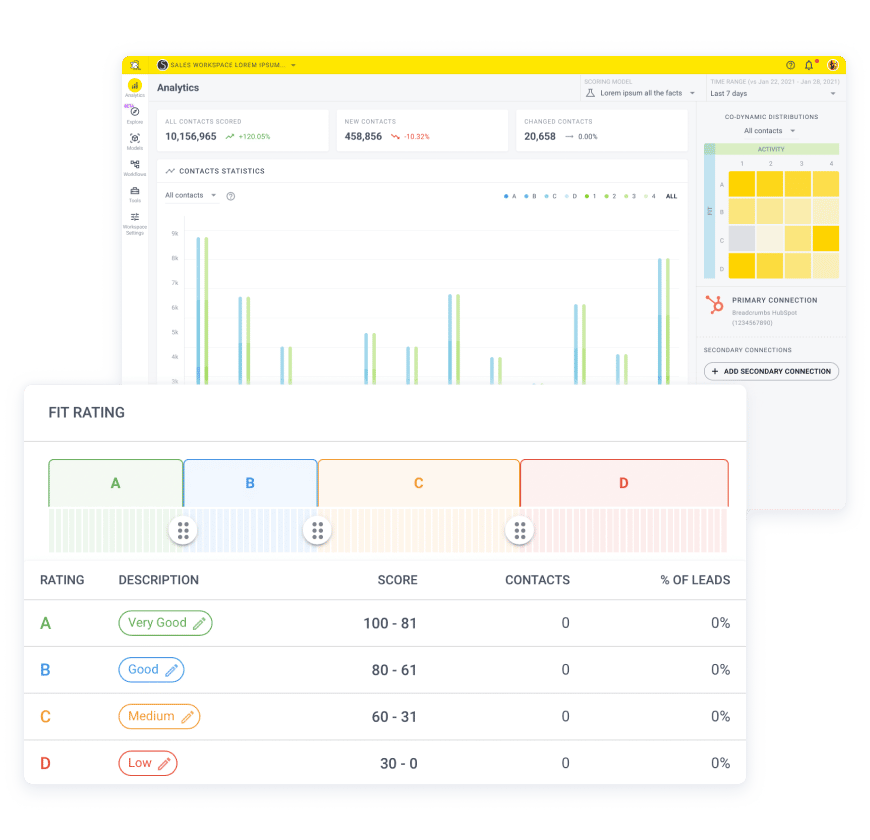
Differently from AI black boxes, the Breadcrumbs final grade includes a letter for fit (from A to D) and a number for activity (from 1 to 4), giving you clear differentiation levels and full control over the criteria that make up the score.
Our lead scoring tool will route back that specific score for each individual contact to your CRM, helping you to rank leads immediately. Your sales team can quickly see which contacts are most likely to convert at high values and know who is ready to be engaged.
And while you’ll still want to utilize the powerful talents of your sales team, giving them the tools they need to succeed is essential. Lead scoring is one of those tools.

Salesforce is one of the most high-powered sales and CRM-focused SaaS tools on the market…
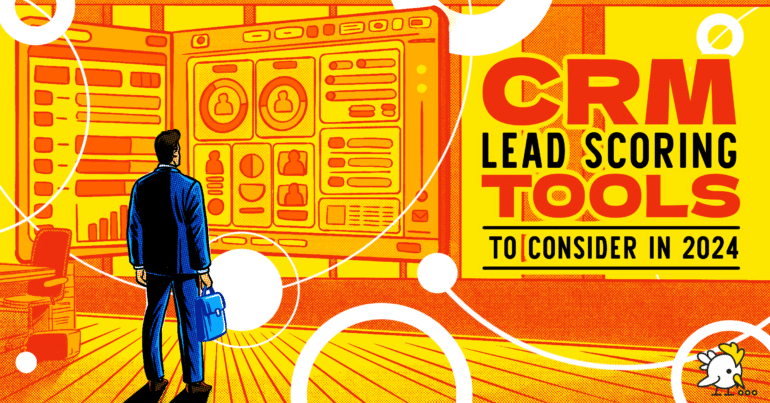
Every good sales team needs a great customer relationship management (CRM) tool backing them up. …
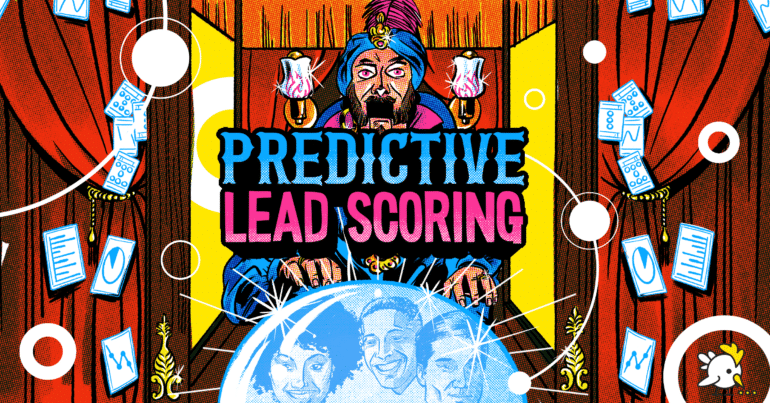
Over the past decade, we’re sure that you’ve noticed that your marketing tech stack options…
If your business is already up and running, the best way to determine a profile for potential high-value customers is to look at the customers you already have.
This is something that brands previously had to do manually. They’d need to look at their highest-value audience segments and try to look for patterns or connect the dots. With hundreds or thousands of customers, this can become time-consuming and often inaccurate, as that kind of data analysis is heavily prone to human error.
So, in order to get the most accurate understanding of what leads you should be trying to reach and what your highest-value leads look like, we recommend taking the following three steps.
When you start ranking leads, you’d still want to go ahead and do a manual review to an extent.
Comb through the CRM and take a brief look at what your highest-value audience segments have in common. Send out surveys to ask why customers chose to work with you, and make sure that you talk to your sales team. They’ll likely have great insights that may otherwise be missed.
It’s now time to identify the different criteria that make up your score and decide how to assign points to each one to effectively rank leads coming to you.
Once that manual audit is done, use an ICP tool like Reveal to make sense of all the data you’ve collected.
Reveal is an invaluable tool we created to take in data from your CRM and compare your entire audience to one selected core audience of your choice. Based on this data, we can show you what your ICP looks like so you can reoptimize your campaigns, your lead scoring models, and your sales approach accordingly.

Not only that, you’ll be able to quickly identify which factors led to closing the deal and immediately create a new scoring category in Breadcrumbs to rank leads more accurately.
This brings us to the final step and the actual lead ranking activity. That is, take this data and implement it into your own lead-scoring models.
Breadcrumbs allows you to create customized lead scoring models for your business and also to split test different models. Split testing different models will make it easy for your sales team to understand which lead-scoring models and factors are most valuable at ranking leads moving forward.
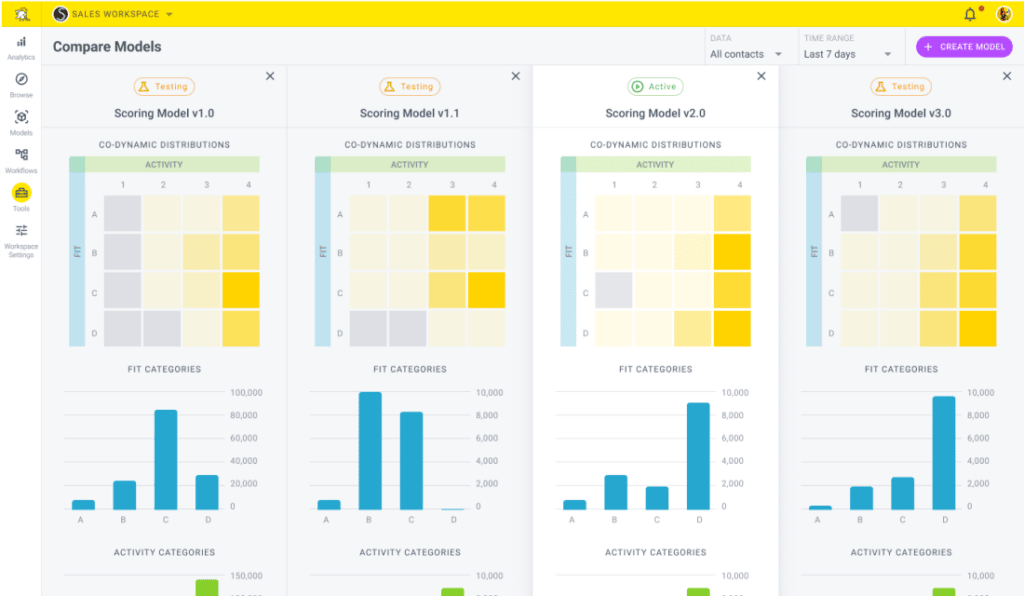
Still, you won’t want to ignore all other leads on principle. This is particularly true early on, when you still may need time to test different contact scoring models to see what works.
As time goes on, remember to reassess your models every six months to a year or any time your business goes through a sizable shift. Sometimes our ICPs change for any number of reasons; it’s important to keep that in mind.
When it comes to setting up lead scoring for your business, having a systemized approach in place is essential.
The first thing you need to do is choose a quality lead-scoring tool that takes fit, activity, recency, and frequency into account. Almost all tools on the market today do not offer all of the above—you typically have to choose between fit or activity, and often either between recency or frequency if they’re even a factor.
Breadcrumbs, however, takes each of the above into account when ranking leads.
First, you’ll import data from your CRM or sales tool into the lead scoring tool of your choice for accurate, up-to-date, and thorough data.
At this point, you’ll create, customize, or adjust different contact scoring models that you believe will help you best identify high-intent leads. Don’t forget to focus on your ICP, but don’t rule out other users with other high-intent signals, too. You can always split-test different models to see what yields the best results.
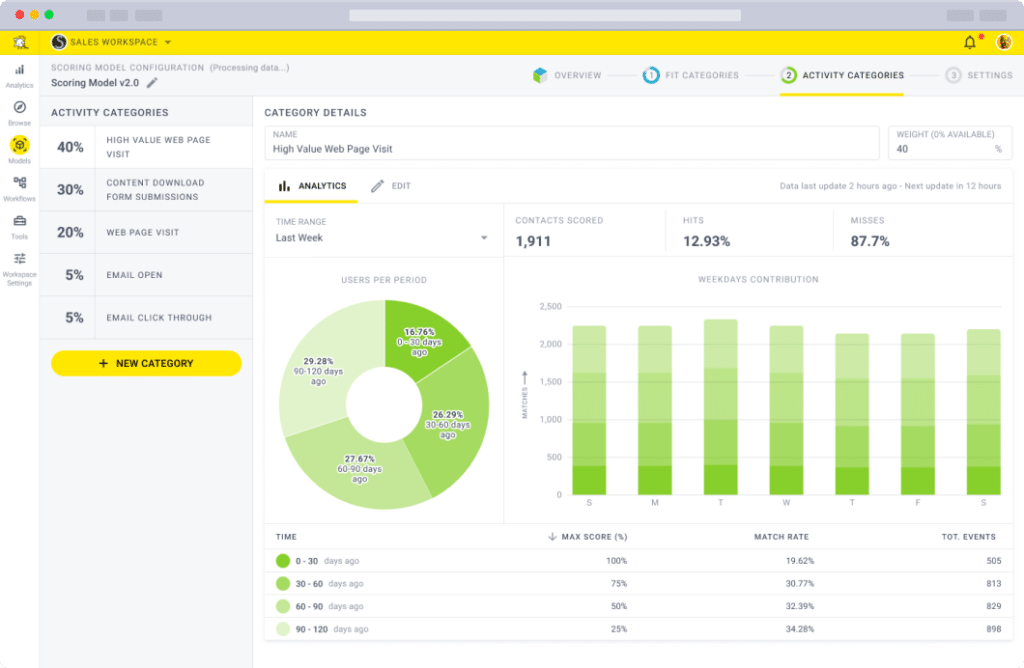
Most lead scoring tools require your sales team to learn a new system, and this may result in pushbacks or delays in adoption.
With Breadcrumbs, the final grades are routed back to your sales tool and integrated seamlessly into the sales team workflows so they’ll have a centralized view of the highest-intent leads to be addressed first without having to learn how to use yet another tool.
We believe in the power of Breadcrumbs scoring so strongly that we are now offering a FREE plan. If you would like to explore a little before you commit, the free version allows you to score a limited number of leads, and see the scores in Breadcrumbs only.
Take advantage of our FREE plan today.
Most people think of lead ranking almost exclusively as part of the initial customer acquisition process and nothing more. If you keep this technology exclusively to lead nurturing, you’re missing a valuable opportunity.
For that reason, we focus on holistic contact scoring and not just lead scoring. We have customizable models for cross-selling, upselling, and re-engagement, in addition to lead acquisition.
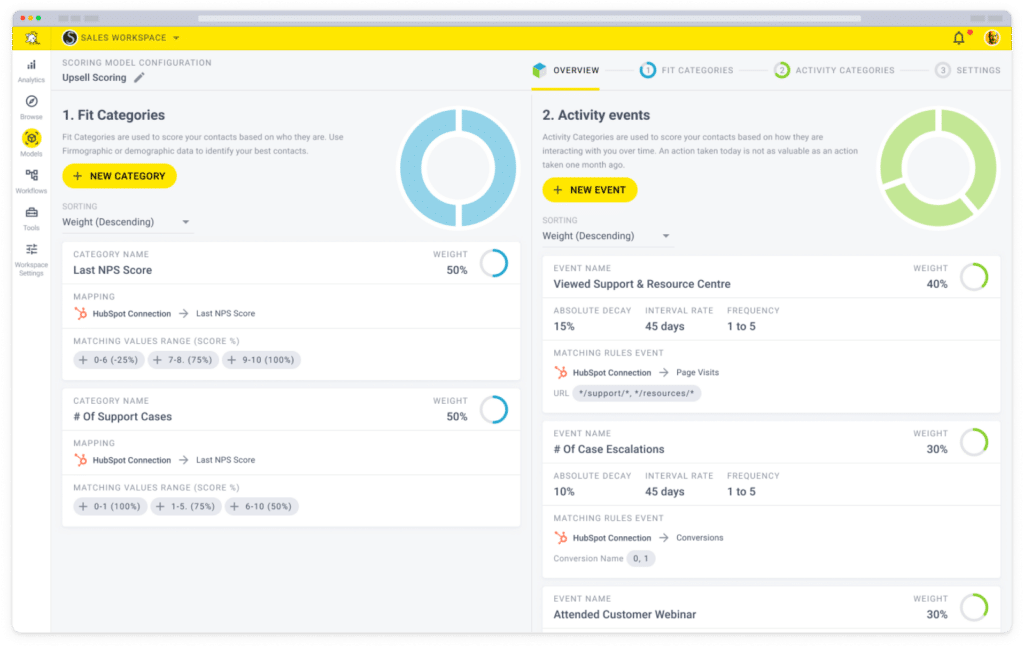
If you want to help your sales team sell more, this is the way to do it.
Help them identify users who need some help from customer service or who have hit the top level of their current plan and could benefit from outreach to be upsold to the next tier on your packages.
You’ll retain users longer, and your customer lifetime value (LTV) will increase dramatically.
Scaling your business is only possible with an influx of new, high-quality leads that your sales team can realistically convert into clients, and clearing the metaphorical clutter so they can focus on the right people is crucial.
Lead scoring is the most effective, accurate way to assess lead quality to make your sales team’s job significantly easier, especially since it’s based entirely on your customers, your digital sales funnel, and your business.
You can even use this information and send it back to your marketing department to explain what audience segments you want to reach, allowing you to essentially push more of the right people into your lead funnel, to begin with, especially since tools like Breadcrumbs gives you insight into full-funnel performance.
Take the time to set up your lead scoring system for success with adequate research, and give some time for trial and error. We also (of course!) strongly recommend trying out lead scoring software to automate and optimize the process of ranking leads, saving you time and money while maximizing efficiency.
It’s hard to say no to that, and trust us: Your sales team will thank you later!
Interested in trying out lead scoring for your business? Sign up for free with Breadcrumbs here to start improving your lead-qualifying process today.
Great article for someone like me who is just starting with lead scoring and ranking leads. Getting the notion that setting up a strong relationship with the sales team is super important here, I’ll keep that in mind!
Giving this to my sales team! No two leads are exactly the same, that’s so true. I think we’ll need to re-think ranking leads and use this as a feedback mechanism for the sales team so they can validate the lead score more efficiently.